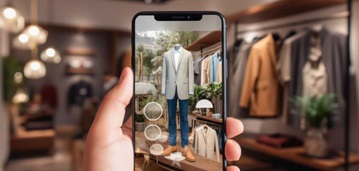Restaurants Need a Strong IT Foundation to Support Digital-First Dining

Now that we’re deep into the new reality the restaurant industry faces, it’s clear the pandemic is accelerating forces that were already in motion around technology adoption, compelling brands to put renewed focus on their technology infrastructure to position them for success.
The array of new technologies in place at large restaurant brands – from premium casual to quick-service establishments – is wide. Point-of-sale systems, including cloud-based POSs, are integrated with myriad applications, including mobile ordering, kiosks, and touchless payment systems. Digital displays are getting more sophisticated and more effective at providing personalized experiences. Powerful in-store WiFi is now table stakes for a positive customer experience, especially with menus going online.
Amid the pandemic, with restaurants doing all they can to attract customers, chains are in a position to use technology to their benefit. Doing so requires having strong IT infrastructure in place, including adequate bandwidth, sound security, plenty of WiFi coverage, and powerful hardware and software to support it all.
Pandemic drives tech trends
One of the big trends in the restaurant market began early on in the pandemic when restaurants were forced to shut their doors to inside dining and instead rely on takeout. They were immediately required to pivot to offer various forms of takeout, including drive-through, curbside pickup, and contactless delivery.
The shift was dramatic. According to a story in Fast Casual, NPD Group said takeout and delivery accounted for less than 50% of all restaurant spending in 2019; by way of contrast, in the early months of the pandemic, Datassential reported 92% of restaurant traffic was off-premise.
"We have to think about restaurants in a different way now," Datassential Group Manager Mark Brandau told Fast Casual. "Since they are mostly off-premise now, it makes sense restaurant operators are re-evaluating their digital strategies."
Those digital strategies include items such as smart menu boards, which can be programmed to update based on factors such as time of day, inventory, customer wait times, the weather, and more. Smart menus also make chalkboards a thing of the past, eliminating the hours it takes each week to fill them out. Instead, smartboards can update daily specials in real-time -- no more having to tell customers a special is sold out.
Online and in-app ordering also bring benefits to restaurants and consumers alike. Mobile order-ahead is the most efficient in-store channel for quick service restaurants, with wait times up to 2.4 times shorter than in-store ordering, according to a study from Rakuten Ready, a location-centric mobile commerce platform. The more customers that use such apps, the more customers a QSR can serve during its busiest times. And for any type of restaurant, mobile apps can reduce the amount of time employees spend handling take-out orders over the phone or in person.
Mobile apps resonate with customers, as well. According to a September 2020 IDC Consumer Experiences Survey, mobile app usage has seen a 36% increase in usage in the last six months, and mobile ordering has increased 28% during the same time frame.
It’s also clear that customers prioritize contactless service, too: 48% report feeling safer when contactless service is available, according to IDC, preferring such options as contactless delivery, pickup, or payment.
Given the need for social distancing, line-busting applications are also increasing in importance. Self-ordering kiosks and customer-facing displays do the trick while limiting person-to-person interactions – and will have shelf life well beyond the pandemic.
“The reality is that the more we get into a digital economy, it really is about adapting and responding quickly as an organization to disruption and the changes that are coming,” said Meredith Whalen, Chief Research Officer of global research firm International Data Corporation (IDC), during a recent webinar. “This idea of business disruption is not going away.”
Meeting the technology requirements of tomorrow
A big benefit of online and in-app ordering is the treasure trove of data it can provide restaurants with about their customers’ preferences and habits. Those that responsibly take advantage of that data will be able to deliver new levels of personalization, driven by artificial intelligence and analytics-based solutions.
Customers who have a restaurant’s app on their phone could be identified as they walk into the store or enter the drive-thru lane. The restaurant can then offer them highly personalized offers based on past purchases, as well as targeted upsell offers. Menu items the customer prefers may appear on the app or on connected smart menu boards. In a drive-thru, perhaps the screen shows your last order and asks if you want a repeat.
Such capabilities will also enable restaurants to prep or finish mobile orders when the customer arrives in the store, streamlining operations and ensuring orders are as fresh as they can be.
Increasing the use of loyalty programs can help restaurants collect the data they need to fuel personalization efforts. “Consumers are more willing now than ever before to share their data with brands who can use that information to provide a more tailored guest experience,” says Ray Hatch, VP, Enterprise Vertical Markets for Comcast Business.
Strong IT foundation required
Delivering on these varied technologies requires a strong, flexible IT infrastructure in each restaurant.
It starts with the POS, which is increasingly cloud-based. While the cloud is still a relatively new segment of the overall POS market, it is growing at a healthy compound annual growth rate of nearly 22%, from $4.95 billion in 2018 to an expected $27.82 billion in 2027, according to researchers at The Insight Partners.
Cloud application requires a fast, reliable Internet connection in order to perform properly and without any costly downtime, which makes bandwidth another core requirement. Restaurants should put a premium on availability, performance, reliability, and stability when it comes to their internet connection, and ensure it has the ability to handle occasional spikes in traffic.
Security is another building block. Like any business, restaurants are susceptible to phishing attacks, malware, distributed denial of service (DDoS), and other cyberattacks. Restaurants need to establish security policies and standards that apply to all locations, as well as regular security training for employees. Technologies including real-time monitoring, unified threat management (UTM), DDoS mitigation, and managed security services may all come into play.
Robust WiFi is a must to leverage mobile ordering and personalization capabilities as well as online menus and line busting applications tied back to the POS.
Network hardware and software need to be kept up to date, with regular refreshes to support new functionality. The network should be able to flex and change as business requirements dictate, making software defined networking a strong value proposition. Managed network services often make sense for restaurants, enabling them to ensure proactive network monitoring and maintain standardized network systems across locations.
While there’s no doubting these are challenging times, effective use of technology can help restaurants weather the storm – and be on sound footing to thrive when the pandemic is finally in the rear-view mirror.
Learn how restaurants are meeting the technology requirements of today – and tomorrow.
Locked Content
Click on the button below to get access
Unlock NowOr sign in to access all content on Comcast Business Community
Learn how Comcast Business can help
keep you ready for what's next.










